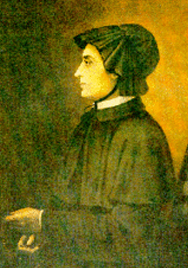Saint of the Day Online - St Elizabeth Ann Seton
Saint of the day online, Thursday, January 04, 2017
04-01-2018
Saint Name: St Elizabeth Ann Bayley
Place: New York
Birth: 1774
Death: 1821
Feast: JAN 04
St Elizabeth Ann Bayley who was born on August 28, 1774, was the first native-born citizen of the United States to be canonized by the Roman Catholic Church. She established the first Catholic girls' school in the nation in Emmitsburg, Maryland, where she also founded the first American congregation of religious sisters, the Sisters of Charity.
In spite of her high society background, Elizabeth's early life was quiet, simple, and often lonely. As she grew a little older, the Bible was to become her continual instruction, support, and comfort -and she would continue to love the Scriptures for the rest of her life.
In 1794, Elizabeth married the wealthy young William Seton, with whom she was deeply in love. The first years of their marriage were happy and prosperous. Elizabeth wrote in her diary at first autumn, "My own home at twenty-the world-that and heaven too-quite impossible."
This time of Elizabeth's life was to be a brief moment of earthly happiness before the many deaths and partings she was to suffer. Within four years, William's father died, leaving the young couple in charge of William's seven half brothers and sisters, as well as the family's importing business.
Events moved quickly from there with devastating effect. Both William's business and health failed. He was finally forced to file a petition for bankruptcy and, in a final attempt to save William's health, the Setons sailed for Italy, where William had business friends.
Unfortunately, William died of tuberculosis while in Italy. Elizabeth's one consolation was that he had recently awakened to the things of God.
A dispute between the United States of America and the French Republic from 1798 to 1800 led to a series of attacks on American shipping. The United Kingdom's blockade of France and the loss of several of his ships at sealed William Seton into bankruptcy and the Setons lost their home at 61 Stone Street in lower Manhattan. The following summer she and the children stayed with her father, who was still health officer for the Port of New York on Staten Island. From 1801 to 1803 they lived in a house at 8 State Street, on the site of the present Church of Our Lady of the Most Holy Rosary (built in 1964). Through most of their married life, William Seton suffered from tuberculosis. The stress worsened his illness; his doctors sent him to Italy for the warmer climate, with Elizabeth and their eldest daughter as his companions. Upon landing at the port of Leghorn, they were held in quarantine for a month, for authorities feared they might have brought yellow fever from New York. William died on 27 December 1803 and was buried in the Old English Cemetery. Elizabeth and Anna Maria were received by the families of her late husband's Italian business partners, who introduced her to Roman Catholicism.
Returning to New York, the widow Seton was received into the Catholic Church, on March 14, 1805, by the Rev. Matthew O'Brien, pastor of St. Peter's Roman Catholic Church, New York,[8] then the city's only Catholic church. (Anti-Catholic laws had been lifted just a few years before.) A year later, she received the sacrament of Confirmation from the Bishop of Baltimore, the Right Reverend John Carroll, the only Catholic bishop in the nation.
In order to support herself and her children, Seton had started an academy for young ladies, as was common for widows of social standing in that period. After news of her conversion to Catholicism spread, however, most parents withdrew their daughters from her tutelage. In 1807 students attending a local Protestant Academy were boarded at her house on Stuyvesant Lane in the Bowery, near St. Mark's Church.
Seton was about to move to Canada when she met a visiting priest, the Abbé Louis William Valentine Dubourg, S.S., who was a member of the French émigré community of Sulpician Fathers and then president of St. Mary's college. The Sulpicians had taken refuge in the United States from the religious persecution of the Reign of Terror in France and were in the process of establishing the first Catholic seminary for the United States, in keeping with the goals of their society. For several years, Dubourg had envisioned a religious school to meet the educational needs of the new nation's small Catholic community.
For the last three years of her life, Elizabeth felt that God was getting ready to call her, and this gave her great joy. Mother Seton died in 1821 at the age of 46, only sixteen years after becoming a Catholic. She was beatified by Pope John XXIII on March 17, 1963, and was canonized on September 14, 1975, by Pope Paul VI.